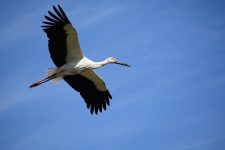About Hyogo Park of the Oriental White Stork
Dear all users

To visitors of Hyogo Park of the Oriental White Stork
The Oriental White Stork, designated as a special natural monument of Japan, is supposed to have been common in this country, but became extinct in the wild of Japan in 1971. In 1965, with the major support of the Cultural Affairs Agency, the Board of Education of Hyogo Prefecture started a program to breed the storks in captivity in Toyooka City located in Tajima District of northern Hyogo which was the last stork’s breeding area in Japan. With the cooperation of local residents, we thereby worked for many years to protect and breed the stork.
In the beginning, we suffered difficulty in getting the eggs to hatch. Fortunately with a pair of Oriental White Storks donated from the Soviet Union in 1985, we succeeded in captive breeding for the first time in 1989, followed by successful breeding every year since then and about 90 storks are currently kept in the park. From 2005, we started releasing storks into the wild. In 2007, for the first time in 43 years, one pair bred successfully in the wild. In 2012, the wild-born parents raised chicks (the third generation) in the wild, representing another turning point in the project. To handle these new developments, the “Grand Design for Reintroduction of the Oriental White Stork” was drawn up in August 2011. We are now working along the lines of this grand design.
Hyogo Park of the Oriental White Stork was established in 1999 to provide an environment where the Oriental White Stork can co-exist with local people. To attain the objective, the park has the following three basic functions: preservation and genetic management of the Oriental White Stork, scientific research and experiments to reintroduce storks into the wild, and education for the creation of environments where man and nature can co-exist. We therefore conduct a wide variety of activities to achieve protection, raising, breeding and reintroduction of the Oriental White Stork.
Hyogo Park of the Oriental White Stork contributes to development of Tajima District by creating environments where nature and man can co-exist.
By August 2022, the stork population size in the wild reached 300. We ask local people and various stakeholders for their continuous supports to our organization.

